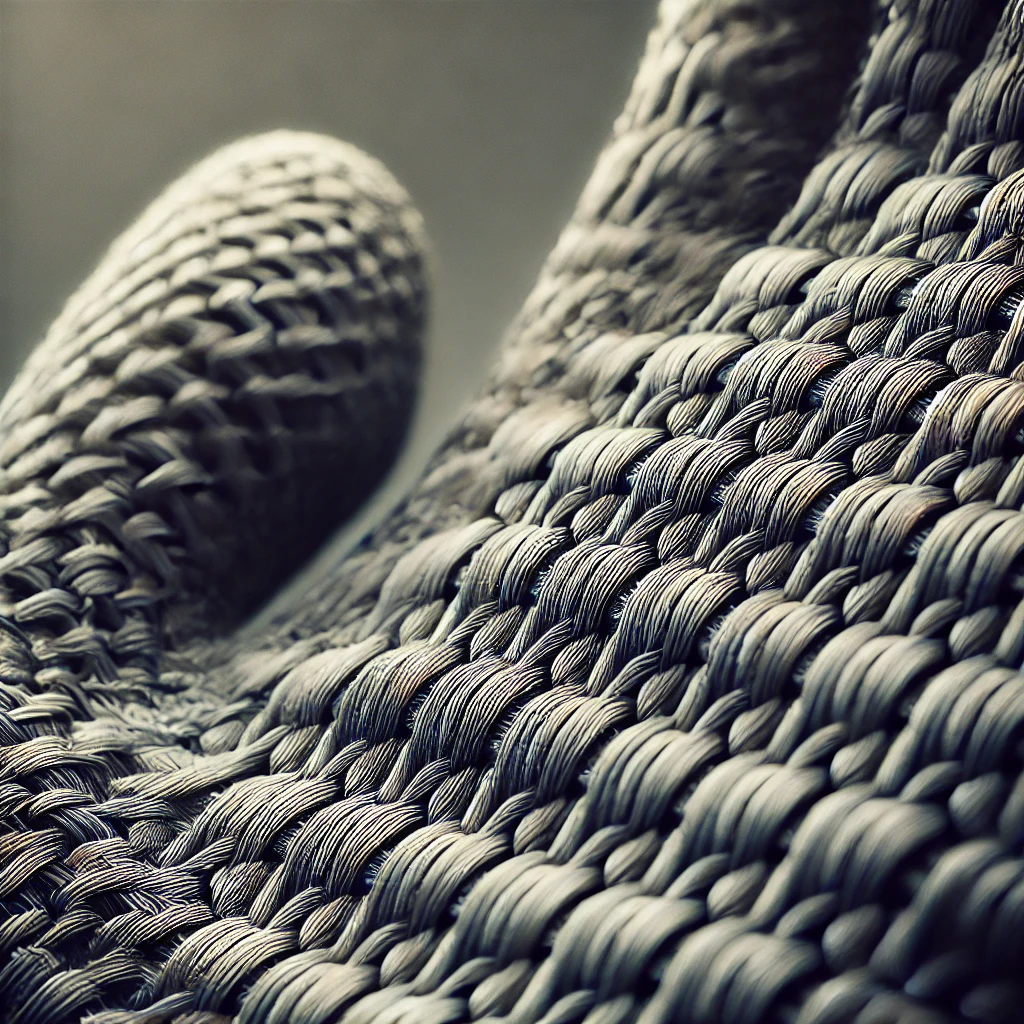Kevlar Gloves: Are They the Ultimate Hand Protection?
Kevlar gloves have become a go-to solution for individuals and businesses seeking top-tier hand protection. From industrial workers handling sharp metal edges to home cooks dealing with high-heat surfaces, these gloves promise unrivaled durability and safety.
What Are Kevlar Gloves?
Kevlar is a type of aramid fiber created by DuPont, renowned for its extraordinary strength and resistance to heat. When this fiber is woven into gloves, it forms a protective barrier that stands up to cuts, abrasions, and even moderate flames. Unlike conventional cotton or leather gloves, Kevlar gloves are known to be:
- Cut-resistant: The densely woven fibers help thwart sharp objects.
- Heat-resistant: The material withstands high temperatures.
- Lightweight: Despite their toughness, they remain comfortable for long-term wear.
- Flexible: They typically allow for better finger dexterity than bulkier safety gloves.
These qualities make Kevlar safety gloves a staple in industries like manufacturing, automotive, glass handling, construction, and more. They’re also increasingly popular among DIY enthusiasts looking for top-tier industrial hand protection when tackling projects at home.
What Are Kevlar Gloves Used For?
Kevlar gloves serve a wide range of functions across various settings. Below are some of the most common applications:
-
Construction Sites
On busy job sites, workers often handle sharp metal sheets, rebar, or jagged equipment. Kevlar gloves help reduce the risk of lacerations and punctures, offering peace of mind during heavy-duty tasks. -
Manufacturing & Assembly Lines
Whether assembling small parts or handling large machinery, workers benefit from cut-resistant properties. Kevlar’s lightweight nature also supports greater dexterity, helping maintain productivity without sacrificing safety. -
Metalworking & Glass Handling
Tasks like cutting, welding, or moving sheet metal require specialized high-heat protective gloves that resist both cuts and mild thermal threats. Glass handling similarly demands a material tough enough to guard against razor-sharp edges.

-
Food Service & Culinary Environments
Professional chefs and at-home cooks benefit from Kevlar’s flame resistance and cut protection when working with hot pans, open flames, or sharp blades. -
Automotive & Aerospace
From fabrication to assembly, Kevlar offers enhanced safety when working around hot engines, sharp edges, and chemical spills, ensuring durable hand protection.
Because Kevlar gloves serve so many industries, they’ve become synonymous with safety gloves for construction, manufacturing, food prep, and more. They’re often part of the essential Personal Protective Equipment (PPE) kit that companies provide to maintain compliance with safety regulations.
Advantages of Kevlar Gloves
1. Superior Cut Resistance
Kevlar fibers have a high tensile strength-to-weight ratio, making them exceptionally resistant to cutting or tearing. This advantage is particularly vital in industries where employees handle sharp objects daily. According to ANSI/ISEA cut levels, many Kevlar gloves achieve moderate to high scores, providing a reliable layer of protection.
2. Heat and Flame Resistance
Aramid fibers like Kevlar are inherently flame-resistant and can tolerate temperatures up to around 800°F (427°C) without breaking down. This makes them ideal for high-heat protective gloves in metalworking, welding, or even culinary settings where momentary contact with hot surfaces is common.
3. Lightweight Comfort
Unlike heavy leather or chainmail gloves, Kevlar gloves are breathable and relatively light. This feature greatly reduces hand fatigue, allowing users to focus on precision tasks for extended periods without discomfort.
4. Chemical Resistance (to a Degree)
Kevlar fibers can stand up to specific chemicals, though this doesn’t make them completely chemical-proof. Still, they offer more resilience than many standard fabric gloves, making them a decent choice for workplaces involving light chemical exposure.
5. Enhanced Dexterity
Glove dexterity can significantly enhance the performance of intricate tasks such as small parts assembly. Kevlar’s flexibility enables users to maintain a better grip and control, minimizing hand strain and increasing efficiency on the job.
What Are the Disadvantages of Kevlar Gloves?
Despite their many benefits, Kevlar gloves aren’t perfect for every scenario. Here are some potential drawbacks:
-
Limited Puncture Resistance
While Kevlar is cut-resistant, it doesn’t offer the same level of puncture protection as some specialized materials (e.g., chainmail or gloves reinforced with steel). Sharp, pointed objects can still penetrate. -
Reduced Grip in Wet or Oily Conditions
Kevlar fibers may become slippery when exposed to oil, water, or other liquids. This can be mitigated by using gloves that combine Kevlar with coatings like nitrile or latex, but pure Kevlar gloves may pose grip challenges. -
Sensitivity to UV Light
Kevlar can degrade over time when frequently exposed to direct sunlight. This reduces the glove’s protective capabilities and lifespan, making proper storage essential. -
Price
High-quality Kevlar gloves can cost more than their cotton or standard synthetic counterparts. For industries on a tight budget, the initial investment might be a deterrent—even though the gloves often prove cost-effective in the long run due to their durability.
-
Heat Transfer Over Extended Periods
While Kevlar withstands high temperatures, it isn’t entirely heat-proof. If you’re continually handling extremely hot objects for a long time, the material can eventually warm up, and you’ll need additional layers or specialized insulation.
Comparison Table: Kevlar Gloves Advantages vs. Disadvantages
| Feature | Advantages | Disadvantages |
|---|---|---|
| Cut Resistance | Offers superior cut protection for sharp objects | Does not guarantee complete puncture resistance |
| Heat & Flame Resistance | Withstands moderate to high temperatures | May transfer heat over long exposure; not fully flameproof |
| Weight & Flexibility | Lightweight design aids comfort and dexterity | May still feel restrictive if gloves are too thick or improperly sized |
| Chemical Resistance | More resilient than cotton to mild chemicals | Not chemical-proof; needs specialized coatings for strong chemicals |
| Grip | Good grip under dry conditions | Slippery when handling oil or water without a coated palm |
| Durability & Lifespan | Long-lasting if cared for properly (washing, storage) | UV and sunlight can degrade fibers; improper maintenance reduces longevity |
| Price Point | Often pays off due to durability and fewer replacements | Higher upfront cost compared to standard cotton or synthetic gloves |
Factors to Consider When Choosing Kevlar Gloves
Selecting the right Kevlar glove applications depends on your specific needs and environment. Below are key considerations:
-
Cut Level Rating
Look for gloves that meet the ANSI/ISEA or EN 388 cut protection standards applicable to your tasks. Higher cut levels provide a more robust defense against sharp hazards. -
Coating Material
Some Kevlar gloves come with palm coatings made of nitrile, latex, or polyurethane. These coatings can improve grip, especially in oily or wet conditions, and offer additional abrasion or chemical resistance. -
Thermal Protection
If you’re in an industry involving high heat—such as welding, metal forging, or cooking—check the glove’s thermal rating. Ensure they are suitable for the temperatures you handle regularly.
-
Size & Fit
Ill-fitting gloves can hamper dexterity and lead to accidents. Always measure your hand circumference and compare it to the manufacturer’s size chart before purchasing. -
Durability & Wear
Consider how frequently you’ll use the gloves and in what conditions. If your work involves heavy abrasion or contact with sharp edges daily, opt for a pair with reinforced fingertips or padded palms for extended durability. -
Regulatory Standards
Make sure any industrial hand protection you choose meets Occupational Safety and Health Administration (OSHA) or other relevant regulatory requirements in your region.
Proper Care and Maintenance
To maximize the lifespan of your Kevlar gloves, follow these tips:
- Regular Inspection: Check for tears, holes, or thinning areas. Discard or replace gloves showing visible damage, as these may compromise safety.
- Wash According to Instructions: Many Kevlar gloves are washable. Use mild detergents and avoid bleach or harsh chemicals, which can degrade the fibers.
- Air Dry: Excess heat from dryers can weaken the material. Air-drying is preferable to maintain the cut-resistant properties.
- Proper Storage: Store gloves in a cool, dry place away from direct sunlight or other UV sources, which can gradually damage the fibers.
Example Use Cases & Success Stories
- Metal Fabrication Shop: A local workshop that switched from cotton gloves to Kevlar safety gloves saw a 50% reduction in hand-related injuries. This not only boosted morale but also saved on medical costs and downtime.
- Restaurant Kitchen: A high-end restaurant found that chefs loved Kevlar gloves for tasks like slicing produce or briefly handling hot baking trays. The gloves provided better control and safety, reducing kitchen mishaps by 30%.
These real-life scenarios illustrate how Kevlar gloves can play a pivotal role in enhancing safety, productivity, and worker confidence across diverse fields.
Frequently Asked Questions (FAQ)
1. Are Kevlar Gloves Fireproof?
Kevlar is inherently flame-resistant but not entirely fireproof. The material can withstand high temperatures and resist flames for short periods. If you need prolonged heat exposure protection, consider gloves with additional thermal insulation.
2. Can Kevlar Gloves Protect Against Chemicals?
Kevlar offers some chemical resistance, especially against mild substances. However, for intensive chemical handling, look for specialty gloves with chemical-resistant coatings or liners.
3. How Do I Clean My Kevlar Gloves?
Always refer to the manufacturer’s instructions. Generally, you can wash Kevlar gloves with mild detergent in cool to warm water. Avoid bleach, as it weakens the fibers. Air-drying is recommended over machine drying.
4. Are They Suitable for DIY Projects at Home?
Absolutely. From gardening tasks that require cut protection to handling hot tools during a home renovation, Kevlar gloves can offer valuable safety advantages for a range of DIY projects.
5. Do Kevlar Gloves Come in Different Cut Levels?
Yes. Manufacturers often produce Kevlar gloves in multiple ANSI/ISEA cut levels. Higher levels provide stronger cut resistance, so choose based on the intensity and hazards of your tasks.



